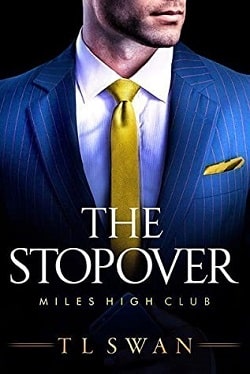Another monitor was connected to the AFC console and showed the data coming in from Fort Meade as it arrived. The encryption system was fast, but there was an enormous amount of data being sent. The result of this was that the screen first filled with what looked like snowlike static, which then began to take form, until the entire image was clear.
The third monitor was connected both to a large computer server and to Castillo's laptop computer. He could call up any of the satellite images to the flat-screen by pushing a key or two on the laptop. Now, since the decryption process was over, the images appeared almost instantaneously.
The fourth monitor was connected both to the server and to a laptop computer being operated by Sergeant Major Jack Davidson, who Castillo had announced was "going to be our map guy."
His job was to prepare and continuously update the maps that would be issued-either in printed copies or as a computer file-to everyone who would have need of one.
Like Castillo, Davidson could instantly call up on his laptop screen, and the monitor, any of the maps and any other data stored in the database. The difference was that Davidson-and he alone-could change the data.
They were both devout believers in the adage-one that went back to the dark ages, when maps were printed, hung on a wall, covered with a sheet of acetate, and corrections and additions made with a grease pencil-that, "If more than one man can make changes to a map, said map invariably will soon be fucked up beyond all repair."
They had worked together before, and they worked together now with a smoothness born of practice.
The first satellite imagery had arrived in Nuestra Pequena Casa an hour before Castillo and Bradley. It was the first photography of the site, and about all it was good for was to enable Davidson to set up the system he knew Castillo would want to use.
By the time Castillo and Bradley walked into the quincho, the refining data had begun to come in. The first imagery had been much like the imagery provided by Google Earth, but in far greater resolution. It hadn't shown anything but suggestions of human activity.
The "refining data" that began to come in about the time Castillo and Bradley walked in used a number of sensing techniques, at first primarily infrared. It sensed differences in temperature between objects in the target area. Computer analyses of these defined what they were.
The easiest to identify were human beings. Their normal temperature was a given. The ambient temperature of the area was known. A difference of so many degrees determined with a great deal of certainty that that moving blob was a human being. And that one a cow. And that one a dog.
Similarly, the heat generated by such things as open fires, stoves, internal combustion engines-making the distinction between gasoline, diesel, and size-was recognized by the computers at Fort Meade and transferred as "refined data."
The blobs were replaced with a symbol-an outline of a truck, for example, or of a man-in which was a number estimating how confident, on a scale of 1 to 5, the computer was of its interpretation.
There would be more refining data as more satellites passed over the target area and the results of more sensing techniques were fed to the computers at Fort Meade. But after Davidson had "laid" the first refining data on top of the aerial photographs, what they had was enough for Castillo to make a decision.
"Bingo!" he said. "That has to be it."
"What that is, Charley, is some sort of a hidden operation," Davidson said, reasonably. "A fairly large one, to judge by the bodies, and probably a refinery, to judge by the large unknown infrared blobs." He paused. "But none of this data has Timmons's name on it."
"So what do we do, Jack?" Castillo had asked. "Send Bustamante or someone else back to penetrate? Running the risk that they get caught? In which case, the best scenario would be that they would move Timmons and the gendarmes someplace we couldn't find them. Or cut their throats and toss them in the river?"
"Don't forget giving them an overdose," Davidson said. He made a face of frustration. "That's why they pay you the big bucks, Charley, to make decisions like that."
"Or we just go in," Castillo went on, "and if Timmons isn't there, we kidnap a couple of them and arrange a swap."
"I don't think you want to do that," Susanna said. "Do you?"
"No, I don't want to do that."
She raised an eyebrow. "Is that the same as 'No, I won't do that'?"
"No."
"Come on in, gentlemen," Castillo called cheerfully as Comandante Duffy and Captain D'Elia appeared in the quincho door. "And I'll…oops!"
A third man-stocky, nearly bald, dark-skinned, and in his thirties-had followed them in. Castillo had no idea who he was, and was already phrasing how he would tell Duffy he was not to bring any of his gendarmes to the safe house without prior permission when the man saluted very casually and, in English, introduced himself:
"Captain Urquila, Colonel," he said. "I ran into D'Elia at the embassy, and he said-since I hadn't actually reported in to you-that I probably should come out here and do it; that you were either here or would be shortly."
Castillo returned the salute as casually.
"What were you doing at the embassy, Captain Urquila?" Castillo asked, very softly and politely.
Davidson, who knew what it often meant when Castillo spoke very softly and politely, looked concerned.
"I wanted to ask Mrs. Sieno, sir, when I could expect you to be in country."















